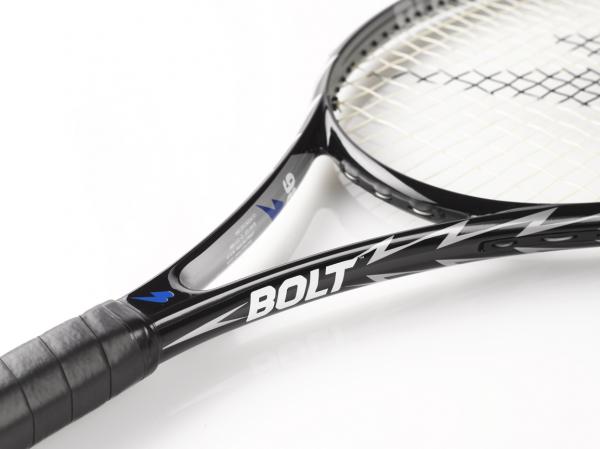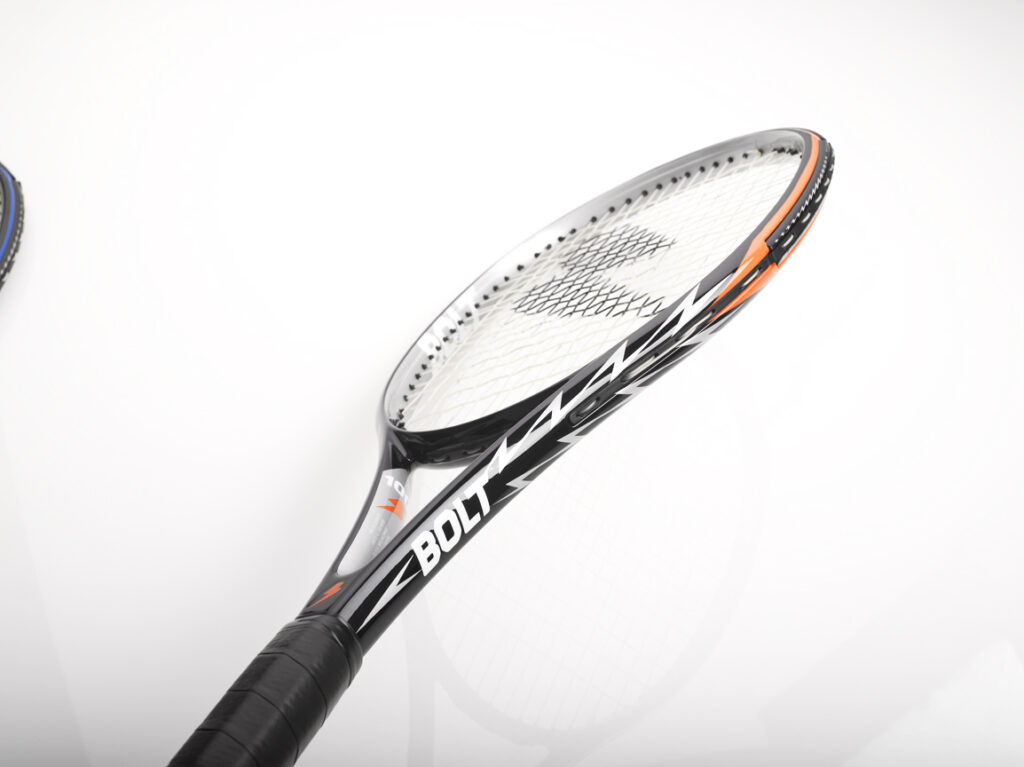LnRiLWltYWdle3Bvc2l0aW9uOnJlbGF0aXZlO3RyYW5zaXRpb246dHJhbnNmb3JtIDAuMjVzIGVhc2V9LndwLWJsb2NrLWltYWdlIC50Yi1pbWFnZS5hbGlnbmNlbnRlcnttYXJnaW4tbGVmdDphdXRvO21hcmdpbi1yaWdodDphdXRvfS50Yi1pbWFnZSBpbWd7bWF4LXdpZHRoOjEwMCU7aGVpZ2h0OmF1dG87d2lkdGg6YXV0bzt0cmFuc2l0aW9uOnRyYW5zZm9ybSAwLjI1cyBlYXNlfS50Yi1pbWFnZSAudGItaW1hZ2UtY2FwdGlvbi1maXQtdG8taW1hZ2V7ZGlzcGxheTp0YWJsZX0udGItaW1hZ2UgLnRiLWltYWdlLWNhcHRpb24tZml0LXRvLWltYWdlIC50Yi1pbWFnZS1jYXB0aW9ue2Rpc3BsYXk6dGFibGUtY2FwdGlvbjtjYXB0aW9uLXNpZGU6Ym90dG9tfSAudGItaW1hZ2VbZGF0YS10b29sc2V0LWJsb2Nrcy1pbWFnZT0iZGM4NzQ0ZDk2MzZmNjU5YzgwMmI4Y2M3ZDdkNTlmNDAiXSB7IG1heC13aWR0aDogMTAwJTsgfSAudGItZ3JpZCwudGItZ3JpZD4uYmxvY2stZWRpdG9yLWlubmVyLWJsb2Nrcz4uYmxvY2stZWRpdG9yLWJsb2NrLWxpc3RfX2xheW91dHtkaXNwbGF5OmdyaWQ7Z3JpZC1yb3ctZ2FwOjI1cHg7Z3JpZC1jb2x1bW4tZ2FwOjI1cHh9LnRiLWdyaWQtaXRlbXtiYWNrZ3JvdW5kOiNkMzhhMDM7cGFkZGluZzozMHB4fS50Yi1ncmlkLWNvbHVtbntmbGV4LXdyYXA6d3JhcH0udGItZ3JpZC1jb2x1bW4+Knt3aWR0aDoxMDAlfS50Yi1ncmlkLWNvbHVtbi50Yi1ncmlkLWFsaWduLXRvcHt3aWR0aDoxMDAlO2Rpc3BsYXk6ZmxleDthbGlnbi1jb250ZW50OmZsZXgtc3RhcnR9LnRiLWdyaWQtY29sdW1uLnRiLWdyaWQtYWxpZ24tY2VudGVye3dpZHRoOjEwMCU7ZGlzcGxheTpmbGV4O2FsaWduLWNvbnRlbnQ6Y2VudGVyfS50Yi1ncmlkLWNvbHVtbi50Yi1ncmlkLWFsaWduLWJvdHRvbXt3aWR0aDoxMDAlO2Rpc3BsYXk6ZmxleDthbGlnbi1jb250ZW50OmZsZXgtZW5kfS50Yi1pbWFnZXtwb3NpdGlvbjpyZWxhdGl2ZTt0cmFuc2l0aW9uOnRyYW5zZm9ybSAwLjI1cyBlYXNlfS53cC1ibG9jay1pbWFnZSAudGItaW1hZ2UuYWxpZ25jZW50ZXJ7bWFyZ2luLWxlZnQ6YXV0bzttYXJnaW4tcmlnaHQ6YXV0b30udGItaW1hZ2UgaW1ne21heC13aWR0aDoxMDAlO2hlaWdodDphdXRvO3dpZHRoOmF1dG87dHJhbnNpdGlvbjp0cmFuc2Zvcm0gMC4yNXMgZWFzZX0udGItaW1hZ2UgLnRiLWltYWdlLWNhcHRpb24tZml0LXRvLWltYWdle2Rpc3BsYXk6dGFibGV9LnRiLWltYWdlIC50Yi1pbWFnZS1jYXB0aW9uLWZpdC10by1pbWFnZSAudGItaW1hZ2UtY2FwdGlvbntkaXNwbGF5OnRhYmxlLWNhcHRpb247Y2FwdGlvbi1zaWRlOmJvdHRvbX0gLnRiLWltYWdlW2RhdGEtdG9vbHNldC1ibG9ja3MtaW1hZ2U9ImM1ZDQ3MDcxZTcwN2Q0N2Q4OWJkMmNiNDc2ODU0ZWIxIl0geyBtYXgtd2lkdGg6IDEwMCU7IH0gQG1lZGlhIG9ubHkgc2NyZWVuIGFuZCAobWF4LXdpZHRoOiA3ODFweCkgeyAudGItaW1hZ2V7cG9zaXRpb246cmVsYXRpdmU7dHJhbnNpdGlvbjp0cmFuc2Zvcm0gMC4yNXMgZWFzZX0ud3AtYmxvY2staW1hZ2UgLnRiLWltYWdlLmFsaWduY2VudGVye21hcmdpbi1sZWZ0OmF1dG87bWFyZ2luLXJpZ2h0OmF1dG99LnRiLWltYWdlIGltZ3ttYXgtd2lkdGg6MTAwJTtoZWlnaHQ6YXV0bzt3aWR0aDphdXRvO3RyYW5zaXRpb246dHJhbnNmb3JtIDAuMjVzIGVhc2V9LnRiLWltYWdlIC50Yi1pbWFnZS1jYXB0aW9uLWZpdC10by1pbWFnZXtkaXNwbGF5OnRhYmxlfS50Yi1pbWFnZSAudGItaW1hZ2UtY2FwdGlvbi1maXQtdG8taW1hZ2UgLnRiLWltYWdlLWNhcHRpb257ZGlzcGxheTp0YWJsZS1jYXB0aW9uO2NhcHRpb24tc2lkZTpib3R0b219LnRiLWdyaWQsLnRiLWdyaWQ+LmJsb2NrLWVkaXRvci1pbm5lci1ibG9ja3M+LmJsb2NrLWVkaXRvci1ibG9jay1saXN0X19sYXlvdXR7ZGlzcGxheTpncmlkO2dyaWQtcm93LWdhcDoyNXB4O2dyaWQtY29sdW1uLWdhcDoyNXB4fS50Yi1ncmlkLWl0ZW17YmFja2dyb3VuZDojZDM4YTAzO3BhZGRpbmc6MzBweH0udGItZ3JpZC1jb2x1bW57ZmxleC13cmFwOndyYXB9LnRiLWdyaWQtY29sdW1uPip7d2lkdGg6MTAwJX0udGItZ3JpZC1jb2x1bW4udGItZ3JpZC1hbGlnbi10b3B7d2lkdGg6MTAwJTtkaXNwbGF5OmZsZXg7YWxpZ24tY29udGVudDpmbGV4LXN0YXJ0fS50Yi1ncmlkLWNvbHVtbi50Yi1ncmlkLWFsaWduLWNlbnRlcnt3aWR0aDoxMDAlO2Rpc3BsYXk6ZmxleDthbGlnbi1jb250ZW50OmNlbnRlcn0udGItZ3JpZC1jb2x1bW4udGItZ3JpZC1hbGlnbi1ib3R0b217d2lkdGg6MTAwJTtkaXNwbGF5OmZsZXg7YWxpZ24tY29udGVudDpmbGV4LWVuZH0udGItaW1hZ2V7cG9zaXRpb246cmVsYXRpdmU7dHJhbnNpdGlvbjp0cmFuc2Zvcm0gMC4yNXMgZWFzZX0ud3AtYmxvY2staW1hZ2UgLnRiLWltYWdlLmFsaWduY2VudGVye21hcmdpbi1sZWZ0OmF1dG87bWFyZ2luLXJpZ2h0OmF1dG99LnRiLWltYWdlIGltZ3ttYXgtd2lkdGg6MTAwJTtoZWlnaHQ6YXV0bzt3aWR0aDphdXRvO3RyYW5zaXRpb246dHJhbnNmb3JtIDAuMjVzIGVhc2V9LnRiLWltYWdlIC50Yi1pbWFnZS1jYXB0aW9uLWZpdC10by1pbWFnZXtkaXNwbGF5OnRhYmxlfS50Yi1pbWFnZSAudGItaW1hZ2UtY2FwdGlvbi1maXQtdG8taW1hZ2UgLnRiLWltYWdlLWNhcHRpb257ZGlzcGxheTp0YWJsZS1jYXB0aW9uO2NhcHRpb24tc2lkZTpib3R0b219IH0gQG1lZGlhIG9ubHkgc2NyZWVuIGFuZCAobWF4LXdpZHRoOiA1OTlweCkgeyAudGItaW1hZ2V7cG9zaXRpb246cmVsYXRpdmU7dHJhbnNpdGlvbjp0cmFuc2Zvcm0gMC4yNXMgZWFzZX0ud3AtYmxvY2staW1hZ2UgLnRiLWltYWdlLmFsaWduY2VudGVye21hcmdpbi1sZWZ0OmF1dG87bWFyZ2luLXJpZ2h0OmF1dG99LnRiLWltYWdlIGltZ3ttYXgtd2lkdGg6MTAwJTtoZWlnaHQ6YXV0bzt3aWR0aDphdXRvO3RyYW5zaXRpb246dHJhbnNmb3JtIDAuMjVzIGVhc2V9LnRiLWltYWdlIC50Yi1pbWFnZS1jYXB0aW9uLWZpdC10by1pbWFnZXtkaXNwbGF5OnRhYmxlfS50Yi1pbWFnZSAudGItaW1hZ2UtY2FwdGlvbi1maXQtdG8taW1hZ2UgLnRiLWltYWdlLWNhcHRpb257ZGlzcGxheTp0YWJsZS1jYXB0aW9uO2NhcHRpb24tc2lkZTpib3R0b219LnRiLWdyaWQsLnRiLWdyaWQ+LmJsb2NrLWVkaXRvci1pbm5lci1ibG9ja3M+LmJsb2NrLWVkaXRvci1ibG9jay1saXN0X19sYXlvdXR7ZGlzcGxheTpncmlkO2dyaWQtcm93LWdhcDoyNXB4O2dyaWQtY29sdW1uLWdhcDoyNXB4fS50Yi1ncmlkLWl0ZW17YmFja2dyb3VuZDojZDM4YTAzO3BhZGRpbmc6MzBweH0udGItZ3JpZC1jb2x1bW57ZmxleC13cmFwOndyYXB9LnRiLWdyaWQtY29sdW1uPip7d2lkdGg6MTAwJX0udGItZ3JpZC1jb2x1bW4udGItZ3JpZC1hbGlnbi10b3B7d2lkdGg6MTAwJTtkaXNwbGF5OmZsZXg7YWxpZ24tY29udGVudDpmbGV4LXN0YXJ0fS50Yi1ncmlkLWNvbHVtbi50Yi1ncmlkLWFsaWduLWNlbnRlcnt3aWR0aDoxMDAlO2Rpc3BsYXk6ZmxleDthbGlnbi1jb250ZW50OmNlbnRlcn0udGItZ3JpZC1jb2x1bW4udGItZ3JpZC1hbGlnbi1ib3R0b217d2lkdGg6MTAwJTtkaXNwbGF5OmZsZXg7YWxpZ24tY29udGVudDpmbGV4LWVuZH0udGItaW1hZ2V7cG9zaXRpb246cmVsYXRpdmU7dHJhbnNpdGlvbjp0cmFuc2Zvcm0gMC4yNXMgZWFzZX0ud3AtYmxvY2staW1hZ2UgLnRiLWltYWdlLmFsaWduY2VudGVye21hcmdpbi1sZWZ0OmF1dG87bWFyZ2luLXJpZ2h0OmF1dG99LnRiLWltYWdlIGltZ3ttYXgtd2lkdGg6MTAwJTtoZWlnaHQ6YXV0bzt3aWR0aDphdXRvO3RyYW5zaXRpb246dHJhbnNmb3JtIDAuMjVzIGVhc2V9LnRiLWltYWdlIC50Yi1pbWFnZS1jYXB0aW9uLWZpdC10by1pbWFnZXtkaXNwbGF5OnRhYmxlfS50Yi1pbWFnZSAudGItaW1hZ2UtY2FwdGlvbi1maXQtdG8taW1hZ2UgLnRiLWltYWdlLWNhcHRpb257ZGlzcGxheTp0YWJsZS1jYXB0aW9uO2NhcHRpb24tc2lkZTpib3R0b219IH0g
BOLT Sports LLC has announced the launch of its new brand on a platform of cutting-edge, proprietary racquet technology called ZipStrips.
“Consumers want innovation and quality design in everything, including tennis racquets,” said BOLT Founder and Director Brett Bothwell. “Look at how mobile devices and computers have advanced in the last 10 years, why not racquets. The bar is high, but we’re problem solvers, and we’re prepared to look at everything with fresh eyes and with new techniques of design and fabrication at our disposal. The first problem we tackled is the fundamental riddle of the composite racquet frame.”
Bothwell has a background in architectural design and engineering, and has been involved with the sport of tennis for almost 40 years, and according to him, “tennis racquets have improved to a degree with stronger and lighter materials, but the inherent trouble with conventional composite racquets mostly gets worse with the evolution.”
 As composite racquets become stronger and lighter, they generally become more rigid and brittle, and have reduced capacity to absorb vibration and shock. Recent trends include modifying the chemical content of composite material to include vibration dampening “softening” agents or elastomeric compounds, or another is to fill the racquets with various kinds of foams, in order to absorb impact shock and vibration. Bothwell believes these solutions are simply stop-gap measures adopted by the industry to compensate for a larger problem.
As composite racquets become stronger and lighter, they generally become more rigid and brittle, and have reduced capacity to absorb vibration and shock. Recent trends include modifying the chemical content of composite material to include vibration dampening “softening” agents or elastomeric compounds, or another is to fill the racquets with various kinds of foams, in order to absorb impact shock and vibration. Bothwell believes these solutions are simply stop-gap measures adopted by the industry to compensate for a larger problem.
“If the strength of the composite is compromised for example, and the frame is made softer and more flexible, then the overall stability and performance of the racquet will be compromised as well,” said Bothwell. “Internal foam helps vibration dampening, but it doesn’t solve the underlying problem and the flexible frame.”
Conventional racquets are designed to flex along their entire length in order to control ball rebound speed. Unfortunately, this flexibility makes them less precise and less accurate than a stiffer racquet. A stiffer racquet, on the other hand, doesn’t absorb much ball impact energy and becomes too powerful for a professional to use. BOLT concluded that the only way to achieve both power and control together is to separate the vehicles for each.
 “It couldn’t be that both the control and the power are a result of the same flexible shaft,” said Bothwell. “There had to be another element that could flex, apart from the frame, to regulate ball rebound speed.”
“It couldn’t be that both the control and the power are a result of the same flexible shaft,” said Bothwell. “There had to be another element that could flex, apart from the frame, to regulate ball rebound speed.”
Following 15 years of research and development, and borrowing in part from the automotive industry, BOLT developed ZipStrip, a design which mimics the suspension system of an automobile. In a BOLT racquet, the strings ride on ZipStrips which are integrated around the racquet head frame. A ZipStrip is a spring-like, flexible composite bar which controls ball rebound speed by responding dynamically to ball impact, much like an auto suspension reacts to bumps on a road. While the ZipStrip flexes to control ball rebound speed, the racquet frame can be made stiff, powerful and accurate.
“With a car, the question is not whether you want a suspension system at all, not having one would be ridiculous, but rather, what kind of suspension system is desired,” said Bothwell. “Whether to have a quick, agile, gently-buffered response like a sports car, or whether to have a more plush, fully-buffered response, like that of a luxury car, is the question. In a sense, it’s ridiculous not to have an integral shock-absorbing suspension system in a racquet when you consider the tremendous impact forces occurring in the game today and the repetition involved.”
 Players will have the ability to select a ZipStrip based on the racquet response they prefer, like selecting a car and its suspension system. The specific traits of a ZipStrip drive the performance of the racquet. Professionals will likely prefer a ZipStrip with traits like a sports car, quick and with great feedback. Less experienced, recreational players may prefer a ZipStrip with more luxurious traits like a sedan with a premium on comfort.
Players will have the ability to select a ZipStrip based on the racquet response they prefer, like selecting a car and its suspension system. The specific traits of a ZipStrip drive the performance of the racquet. Professionals will likely prefer a ZipStrip with traits like a sports car, quick and with great feedback. Less experienced, recreational players may prefer a ZipStrip with more luxurious traits like a sedan with a premium on comfort.
On Jan. 23, tennis enthusiasts had a chance to test out the ZipStrip technology for themselves at the official BOLT Racquet Launch Party held at CityView Racquet Club. In attendance were Mark McIntyre, head of the Riverside Clay Tennis Association; former USTA Eastern Presidents Tim Heath and Richard Scheer, top local teaching pros; former New York Mayor David Dinkins; and others eager to demo the new BOLT racquets. People stepped on to the court and starting hitting tennis balls, they immediately saw a difference in their game.
“This racquet made me look good,” said Mark McIntyre.
The party gave everyone an opportunity to try the brand new racquets, as well as take part in a Q&A session with the manufacturer. “I am loving my Bolt 100,” said Tim Heath.
Mayor Dinkins, who has already been using the Bolt, said, “The Bolt racquet has added years to my game and allows me to play for a longer time frame each time.”




 As composite racquets become stronger and lighter, they generally become more rigid and brittle, and have reduced capacity to absorb vibration and shock. Recent trends include modifying the chemical content of composite material to include vibration dampening “softening” agents or elastomeric compounds, or another is to fill the racquets with various kinds of foams, in order to absorb impact shock and vibration. Bothwell believes these solutions are simply stop-gap measures adopted by the industry to compensate for a larger problem.
As composite racquets become stronger and lighter, they generally become more rigid and brittle, and have reduced capacity to absorb vibration and shock. Recent trends include modifying the chemical content of composite material to include vibration dampening “softening” agents or elastomeric compounds, or another is to fill the racquets with various kinds of foams, in order to absorb impact shock and vibration. Bothwell believes these solutions are simply stop-gap measures adopted by the industry to compensate for a larger problem. “It couldn’t be that both the control and the power are a result of the same flexible shaft,” said Bothwell. “There had to be another element that could flex, apart from the frame, to regulate ball rebound speed.”
“It couldn’t be that both the control and the power are a result of the same flexible shaft,” said Bothwell. “There had to be another element that could flex, apart from the frame, to regulate ball rebound speed.” Players will have the ability to select a ZipStrip based on the racquet response they prefer, like selecting a car and its suspension system. The specific traits of a ZipStrip drive the performance of the racquet. Professionals will likely prefer a ZipStrip with traits like a sports car, quick and with great feedback. Less experienced, recreational players may prefer a ZipStrip with more luxurious traits like a sedan with a premium on comfort.
Players will have the ability to select a ZipStrip based on the racquet response they prefer, like selecting a car and its suspension system. The specific traits of a ZipStrip drive the performance of the racquet. Professionals will likely prefer a ZipStrip with traits like a sports car, quick and with great feedback. Less experienced, recreational players may prefer a ZipStrip with more luxurious traits like a sedan with a premium on comfort.








